Chinese Festivals
Description
1. Spring Festival (Chinese New Year)

Introduction:
Spring Festival, the first day of the first month of the lunar calendar, also known as the lunar year, commonly known as the "New Year", is one of the most grand and lively traditional festivals in China. The Spring Festival has a very long history, which originated in the Yinshang period at the end of the year to sacrifice to the gods and ancestors. In the Republic of China, the calendar was changed to the Gregorian calendar, and the first day of January in the Gregorian calendar was called New Year's Day, while the first day of January in the lunar calendar was called the Spring Festival. The arrival of the Spring Festival means that spring will come, everything will be revitalized, grass and trees will be renewed, and a new round of sowing and harvesting season will begin. By celebrating the Spring Festival, people express their expectation of spring and their good wishes for the future.
Characteristics:
1)What to do?
Sweeping dust: The cleaning before the Spring Festival is a traditional Chinese custom and a way to remove bad luck and welcome joy.
Putting up Spring Festival couplets and New Year's paintings: During the Spring Festival, families will select a pair of large red Spring Festival couplets to put on their doors to add to the festive atmosphere.
Posting the Chinese character "福字" : Posting the character "福" upside down means "happiness is upside down" and "good fortune is upside down".
New Year's Eve Vigil: On the night of New Year's Eve, the whole family stays up to observe the New Year's Eve together, gathering and drinking to share the joy of family life.
New Year's Greetings: On the first day of the first month of the lunar calendar, people exchange New Year's greetings when they meet each other, and traditional New Year's greetings include kowtowing, bowing, and clasping fists and hands.
2)What to eat?
On New Year's Eve, the whole family will have a reunion dinner together to symbolize reunion and happiness. Different regions have different specialties, such as dumplings in the north (symbolizing a new year) and rice cakes in the south (symbolizing a yearly rise).
3What to play?
Dragon and Lion Dance: During the Chinese New Year, dragon and lion dances are held around the country to pray for good luck and a good harvest in the coming year.
Temple Fairs: There are various snacks, handicrafts and performances at temple fairs, so people can enjoy the lively atmosphere of the festival while shopping and eating.
Firecrackers: The sound of firecrackers to bid farewell to the old year signifies to drive away evil spirits and usher in good fortune.
2. Lantern Festival
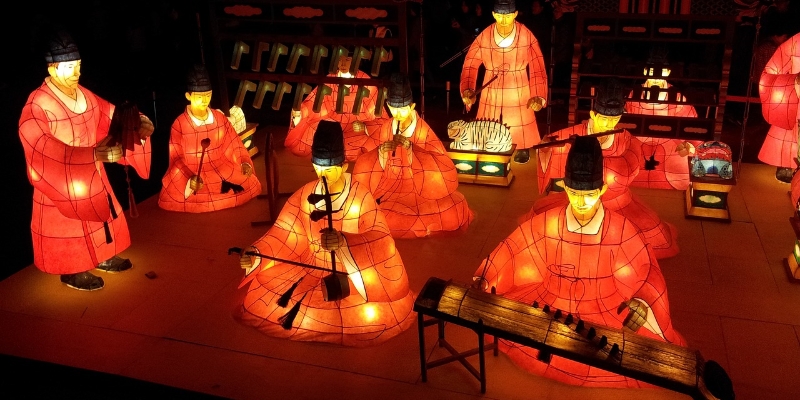
Introduction:
The Lantern Festival, also known as the Shangyuan Festival, the Night of Lanterns, and the Festival of Lights, is a traditional Chinese festival celebrated on the fifteenth day of the first month of the lunar calendar every year. The Lantern Festival has a long history, as early as 2,000 years ago, during the Qin Dynasty, the relevant customs already existed. According to historical records, Emperor Wen of the Han Dynasty (179-157 BC) celebrated Zhou Bo's pacification of the chaos of Zhu Lu on the fifteenth day of the first lunar month by going out of the palace every night to have fun with the people, and thus designated the fifteenth day of the first lunar month as the Lantern Festival. Since then, the Lantern Festival has gradually developed into a folk festival celebrated by all the people.
Characteristics:
1)What to play?
Appreciate lanterns: During the Lantern Festival, people will put up all kinds of lanterns, such as hanging lanterns with spikes, beautiful seat lamps, beautiful wall lamps, delicate lanterns, etc.
Guessing lantern riddles: Guessing lantern riddles is an activity added later on during the Lantern Festival. People will write riddles on strips of paper and stick them on colorful lanterns for people to guess.
Dragon and Lion Dance: Both dragons and lions are symbols of good luck in Chinese culture. The dragon and lion dance not only adds to the festive atmosphere, but also sends people's good wishes for the New Year.
Stilt-walking: Stilt-walking is an ancient folkloric art performance, which is especially popular during the Lantern Festival. Performers walk freely on stilts and do various difficult maneuvers, attracting the attention of many spectators.
2)What to eat?
Eat Yuanxiao: Yuanxiao is the traditional food of the Lantern Festival, which is called Yuanxiao by people in the north and Tangyuan by people in the south. Made of fine glutinous rice flour, Yuanxiao is round and filled with walnut kernels, sesame seeds or osmanthus sugar. Eating Yuanxiao symbolizes reunion and happiness, and is an indispensable food for the Lantern Festival.
3. Qingming Festival (Tomb Sweeping Day)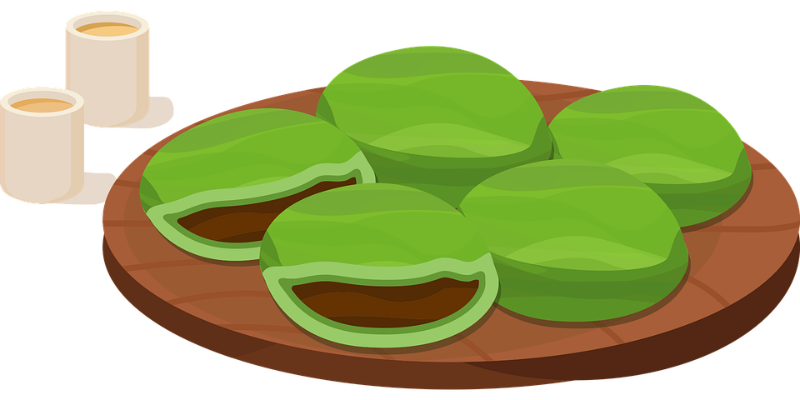
Introduction:
Qingming Festival, also known as Treading Green Festival, is a traditional Chinese festival and one of the twenty-four solar terms in the lunar calendar. It started around the Zhou Dynasty, and has a history of more than 2,500 years. The origin of Qingming Festival is closely related to the ritual of "tomb sacrifice" of ancient emperors and generals. Later, this custom was gradually spread among the people. The Qingming Festival is not only a day for ancestor worship and grave-sweeping, but also a festival for people to get close to nature, trekking and playing, and enjoying the fun of spring.
Characteristics:
1)What to do?
Tomb-sweeping: Qingming Festival is a day of ancestor and tomb-sweeping. People bring wine, food, fruits, paper money and other items to the cemetery, offer food to their loved ones' graves, burn the paper money, cultivate new soil for the graves, fold a few green branches and stick them on the graves, and then bow down to pay homage to the ancestors.
Treading Green and Playing: Qingming Festival is a good time for people to take a spring trip (called "Treading Green" in ancient times) when the spring is bright and the grass and trees are green.
Tree planting: Before and after the Qingming Festival, the spring sun shines and the spring rain sprinkles, planting saplings with high survival rate and fast growth. Therefore, since ancient times, China has the custom of planting trees at Qingming.
2)What to eat?
During the Qingming Festival, different regions have different food customs. For example, it is customary to eat green dumplings in the south of the Yangtze River. Green dumplings are green cakes made of glutinous rice flour, usually with bean paste or sesame filling. It retains the traditional custom of the Cold Food Festival, and is also an essential offering for ancestor worship at Qingming. In addition, some other places will eat foods such as eggs and date cakes, which symbolize good luck and a long and healthy life.
4. the Dragon Boat Festival(Duanwu)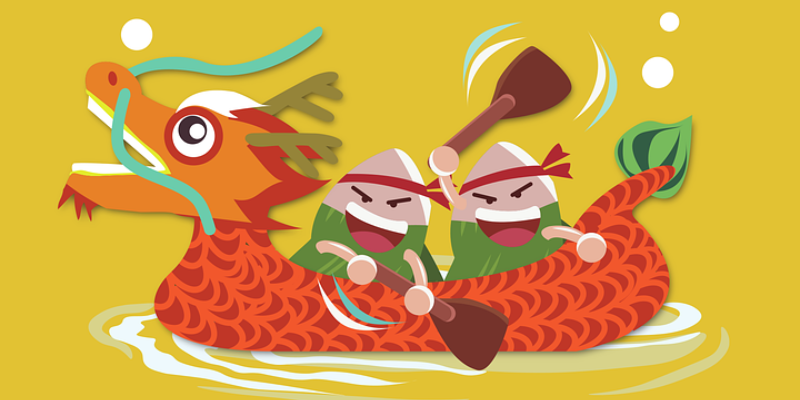
Introduction:
Dragon Boat Festival, also known as Duan Yang Festival, Dragon Boat Festival, Chong Wu Festival, Chong Wu Festival, etc., is a traditional Chinese festival celebrated on the fifth day of the fifth month of the lunar calendar every year. The Dragon Boat Festival has a long history, dating back to the Spring and Autumn and Warring States periods, and has been celebrated for more than 2,000 years. There are various legends and explanations about the origin of the Dragon Boat Festival, the most well-known of which is in honor of Qu Yuan. Qu Yuan was a statesman and poet of Chu during the Warring States period. He was exiled for his loyalty and eventually threw himself into the river, so the local people, in order to commemorate him, rowed dragon boats and ate zongzi on the fifth day of the fifth month of every year, which gradually led to the formation of the Dragon Boat Festival.
Characteristics:
1)What to do?
Dragon Boat Rowing: Dragon boats are rowed on May 5 every year in honor of Qu Yuan. Now, rowing dragon boat has become a traditional Chinese folk water sports and entertainment programs, especially prevalent in the southern region.
Hanging Mugwort and Calamus: During the Dragon Boat Festival, people will hang Mugwort and Calamus in front of their homes to drive away evil spirits and avoid epidemics.
Wear a scented capsule: children wear a scented capsule during the Dragon Boat Festival, which, according to legend, is meant to ward off evil spirits and drive away the plague.
Tying five-colored silk threads: On the Dragon Boat Festival, children tie five-colored silk threads (green, red, white, black and yellow) around their wrists and ankles to ward off evil spirits.
2)What to eat?
Zongzi is a must-try food for the Dragon Boat Festival, made from glutinous rice and various fillings wrapped in bamboo leaves and steamed. The origin of zongzi is related to Qu Yuan, people throw rice into the river to worship Qu Yuan, and then gradually evolved into the custom of eating zongzi. In some areas, the Dragon Boat Festival has the custom of drinking Xionghuang wine, which is said to drive away evil spirits and epidemics.
5. Qixi (Chinese Valentine's Day)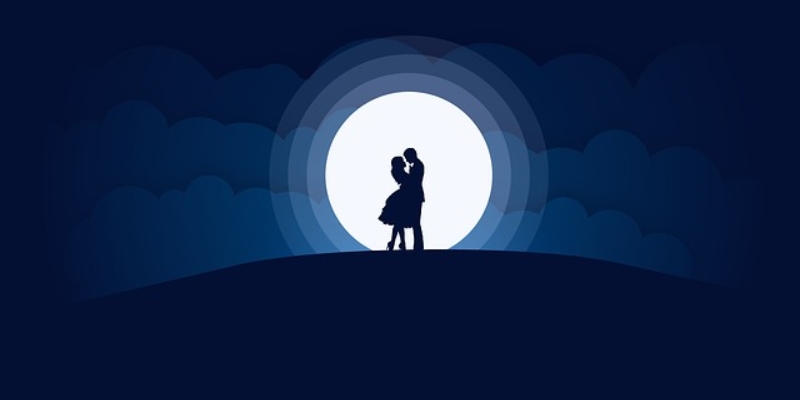
Introduction:
Qixi is a traditional Chinese folk festival. It originated in the Han Dynasty, flourished in the Tang Dynasty, flourished in the Song and Yuan Dynasties, and was enriched in the Ming and Qing Dynasties. It can be traced back to the ancient worship of the Star Chronicle, a romantic night for young girls to worship the star god and pray for dexterity. Later, the Tanabata Festival gradually incorporated the beautiful love legend of the Cowherd and the Weaving Maiden and became a festival symbolizing love, and in contemporary times it has developed the cultural meaning of "Chinese Valentine's Day". The Tanabata Festival is not only popular in China, but has also influenced neighboring Asian countries such as Japan, Vietnam and the Korean Peninsula, where it is also celebrated.
Characteristics:
1)What to do?
Begging for coquettish objects: The most common custom of the Tanabata Festival is for women to engage in various kinds of begging for coquettish objects on the night of the seventh day of the seventh month. There are various ways of begging for coquettish things, such as threading needles to beg for coquettish things, throwing needles to check for coquettish things, and delighting spiders to answer for coquettish things.
Worshiping the Weaving Maiden: On the night of the seventh lunar month, young girls and young women gather together to worship the star of the Weaving Maiden, praying for beauty, marriage and happiness.
Qingmiao Hui: In some areas, such as Urumqi, prayers such as "Qingmiao Hui" will be held during the Tanabata Festival, in the hope that the wind and rain will be smooth and the grains will be plentiful.
2)What to eat?
Qiaoguo is the most famous food for the Tanabata Festival. Qiaoguo is a variety of small objects made of oil, flour, sugar, honey and other materials, and comes in many styles. People make and taste Qiaoguo during the Tanabata Festival to pray for dexterity and happiness.
6. Zhongyuan Festival(Tribute to the departed)
Introduction:
Zhongyuan Festival, commonly known as the half of the seventh month, the fourteenth day of the seventh month, the Festival of Ancestor Worship, the Bon Festival, etc., is an important traditional festival in China. It has a long history, which can be traced back to the ancient times of ancestor worship and agricultural harvest festival. In ancient times, people used to trust the blessings of the gods for a good agricultural harvest, and held a grand festival in the fall when the crops were ripe to thank the gods and ancestors for their blessings. This custom gradually evolved into today's Zhongyuan Festival.
Characteristics:
1)What to do?
Ancestor worship: People will prepare abundant offerings, such as joss sticks, paper money, fruits, wine, etc., and go to their ancestors' graves or the places where their ancestors' tablets are enshrined in their homes to pay homage to them.
Releasing River Lanterns: People will place lamps or candles on the base of the river lanterns and then put them into the rivers, lakes and seas and let them float. The purpose of releasing the river lanterns is to ferry the ghosts and other lonely souls in the water in the hope that they can find their way back to their homes and be transcended.
Burning of street clothes: In Hong Kong and other places, people will burn street clothes during the Mid-Yuan Festival. They will prepare incense and candles, gold and silver clothes and paper and some offerings such as bean curd and white rice on the roadside for worship. The purpose of burning street clothes is to provide the lonely souls with clothes to protect them from the cold and food to wrap up their stomachs.
2)What to eat?
During the Mid-Yuan Festival, people in different regions will eat specific foods to celebrate the festival. For example, many parts of the country choose to eat duck, as the word "duck" is synonymous with "pressure", which means to suppress all bad things; the northern part of Shaanxi Province eats flower buns, which means children and grandchildren, good fortune and longevity; and the people of Jiangxi Province are accustomed to eating buns, which signifies peace and good fortune.
7. the Mid-Autumn Festival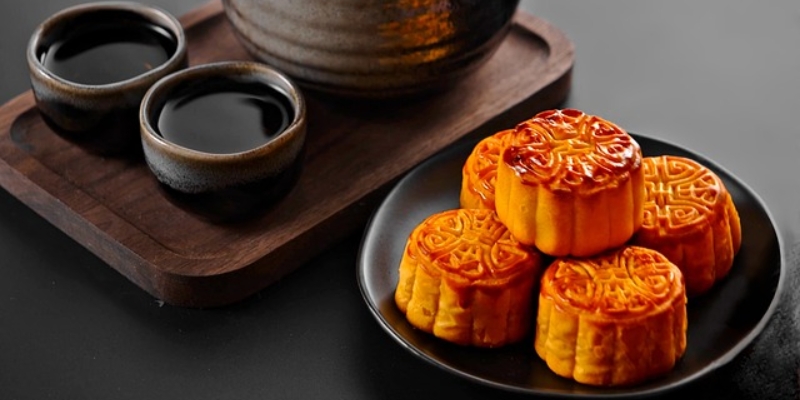
Introduction:
Mid-Autumn Festival is one of the traditional Chinese folk festivals. It originated in the ancient times, popularized in the Han Dynasty and stereotyped in the Tang Dynasty, and is known as one of the four major traditional Chinese festivals together with the Spring Festival, Qingming Festival and Dragon Boat Festival. The Mid-Autumn Festival is also closely connected with the story of Chang'e's journey to the moon. Hou Yi shot off the extra nine suns and was rewarded by the heavens with a medicine to become immortal. He could not leave his wife, Chang'e, so he gave the medicine to Chang'e for safekeeping. On August 15th, Chang'e ate the medicine and went to the moon. Hou Yi missed Chang'e, so every year on this day, he would set up Chang'e's favorite food in his garden, hoping that she would come back for a reunion.
Characteristics:
1)What to do?
Appreciate the moon: People usually view the full moon at night and enjoy mooncakes, lantern riddles and singing songs while enjoying the moon.
Playing with lanterns: During the Mid-Autumn Festival, people make or buy various kinds of lanterns to decorate their homes, and organize lantern parades and competitions.
Offerings to the Moon: People will set up a large incense burner and offer mooncakes, watermelons, apples and other offerings to pray to the moon god.
2)What to eat?
Mooncake is the most representative food of Mid-Autumn Festival. It is round, symbolizing unity and harmony. People usually use mooncakes to entertain friends and relatives, give gifts or taste them for themselves. Mooncakes come in a variety of flavors and fillings, such as lotus seed paste, bean paste, five kernels, etc. Different regions and ethnic groups also have different flavors of mooncakes.
8. Chongyang Festival(Double Nine)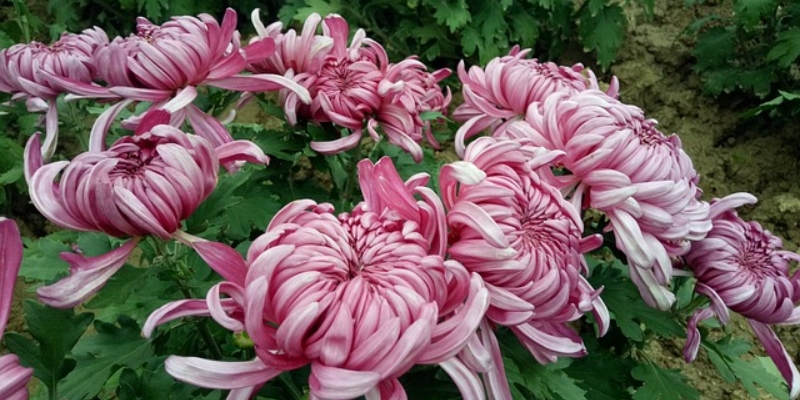
Introduction:
Chongyang Festival is a traditional Chinese folk festival held on the ninth day of the ninth month of the lunar calendar every year. The festival originated from the worship of heavenly signs and began in ancient times, popularized in the Western Han Dynasty, and flourished after the Tang Dynasty. According to the existing historical materials and evidence, the ancient times in the seasonal autumn harvest held in the sky, ancestor worship activities; ancient people in September when the crop harvest sacrifice to the emperor, ancestor worship, in order to thank the emperor, ancestor grace activities, this is the Chung Yeung Festival as a fall harvest ritual activities and the existence of the original form. The ancient people believed that the 9th day of the 9th lunar month was an auspicious day, and thus gradually developed the custom of celebrating the Chongyang Festival.
Characteristics:
1)What to do?
Climbing and hiking: The Chung Yeung Festival falls in the season of golden wind and fragrant red leaves, people like to climb and hike to appreciate the autumn scenery and feel the beauty and changes of nature.
Wearing Cornus officinalis: People wear Cornus officinalis on their bodies or insert it in the places they pass by when they climb up to see the sky, in order to ward off evil spirits and seek good luck, and prolong their lives.
Appreciating chrysanthemums: During the Chrysanthemum Festival, various kinds of chrysanthemums are in full bloom, and chrysanthemum appreciation naturally becomes an important part of the festival.
Ancestor Worship: Chongyang Festival is also a festival of ancestor worship. Family members will gather together to pay homage to their ancestors and express their respect and gratitude to their predecessors.
2)What to eat?
Chongyang Cake, also known as Flower Cake, Chrysanthemum Cake, and Five-Color Cake, is a representative food for the Chrysanthemum Festival on September 9th. As a festival food, it was first eaten to celebrate a good grain harvest and to taste the new grain. Because "high" and "cake" resonate with each other, there is the auspicious meaning of climbing high step by step, and then there is the custom of eating cake on the 9th day of the 9th September. At the same time, people will also taste chrysanthemum wine with chrysanthemum as the main ingredient, which is believed to have the effect of driving away evil spirits and is one of the most traditional and important beverages of the Chrysanthemum Festival.
9. Laba Porridge Festival
Introduction:
Laba Festival, the eighth day of the twelfth month of the lunar calendar, is one of the traditional Chinese festivals, originating from the Buddhist commemoration of the day of Siddhartha Gautama's attainment of enlightenment, and later integrated into the folklore as a festival for praying for a good harvest and offering sacrifices to ancestors and gods. On this day, every family cooks a steaming pot of Laba congee, which is slowly simmered with a variety of ingredients such as rice, glutinous rice, red beans, lotus seeds, etc., to symbolize a bountiful harvest and a sweet life.
Characteristics:
1)What to do?
Cooking Laba congee: People will start preparing the ingredients the night before and start boiling early in the morning of Laba day until the congee becomes thick and sweet.
Giving away the congee: The cooked congee is not only for family members to eat, but also for friends and neighbors to give away.
Soaking Laba Garlic: In the northern region, there is also the custom of soaking Laha garlic on Laha Festival. People will put the peeled garlic cloves into a sealed container and pour vinegar to pickle. After a period of soaking, the garlic cloves will become bright green like jade, and the taste is hot and sour. Laha Garlic is not only a delicious dish to accompany meals, but also signifies the removal of the old and the welcoming of the new year.
Other activities: Meanwhile, people also carry out cleaning and ancestor worship on this day to pray for peace and happiness in the coming year.
2)What to eat?
On the day of Laba Festival, families sit around and taste the steaming bowl of fragrant Laba congee. This bowl of congee is made from rice, glutinous rice, jujubes, lotus seeds, red beans, and other ingredients, and is carefully prepared to be not only nutritious, but also symbolic of the abundance of grains and sweetness of life. In addition, in the northern region, people will also soak Laba garlic, bright green garlic cloves with vinegar spicy and sour, adding a touch of unique flavor for the holiday.
10. New Year's Eve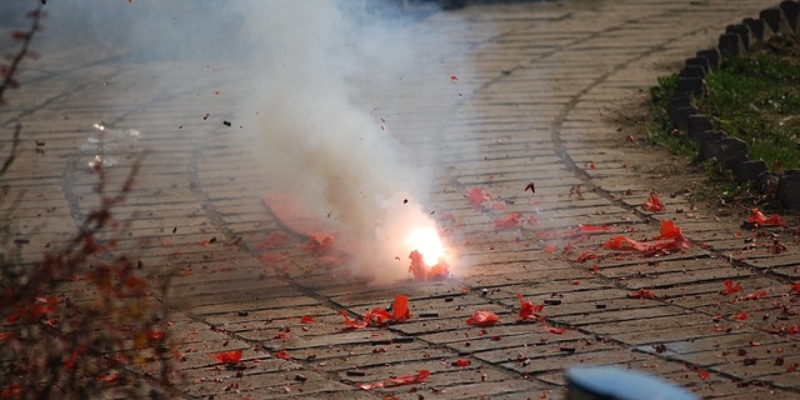
Introduction:
New Year's Eve is the last night of the Lunar New Year (December). The word "除" means to remove, while "夕" means night, so New Year's Eve signifies the end of the old and the beginning of the new year, and the renewal of all things. This festival originated from the custom of "removing" in the pre-Qin era, in which ancient people beat drums on the day before the New Year to drive away evil spirits and pray for a disease-free year.
Characteristics:
1)What to do?
Ancestor worship: The first major event on New Year's Eve is ancestor worship. Families will set up a rich meal at home, light incense and candles, and parents will lead their children and grandchildren to bow down to express their feelings of "being cautious of the end of the year and chasing the distant future".
New Year's Eve: On New Year's Eve, there is a custom of keeping watch for the New Year, in which the whole family sits around and waits for the arrival of the New Year.
Putting up Spring Festival couplets, window decorations and New Year's paintings: In order to add to the festive atmosphere, people put up Spring Festival couplets on the doors, window decorations on the windows, and New Year's paintings on the walls.
2)What to eat?
New Year's Eve dinner: New Year's Eve dinner, also known as the reunion dinner, is the most important meal for every family. The New Year's Eve dinner includes a variety of dishes, such as dumplings (which symbolize wealth and prosperity), fish (which symbolizes a good year's harvest), and rice cakes (which symbolize a good year's harvest).
Dumplings: People in the north are used to eating dumplings on New Year's Eve because they are shaped like a golden treasure, which means wealth and prosperity; at the same time, the word "jiaozi" harmonizes with the word "jiaozi" in the phrase "the time of jiaozi", which means "the change of the old and the new. It symbolizes the transition between the old and the new.
Fish: Fish is an indispensable dish at the New Year's Eve dinner, as "鱼" and "余" have the same sound, implying that there is more than enough for every year. Fish is usually not eaten in its entirety to preserve the auspicious meaning of "Yu".
3)What to play?
On New Year's Eve, in addition to the traditional activities mentioned above, people will also engage in some recreational activities, such as watching the Spring Festival Gala, setting off firecrackers and playing cards.
Related Posts
Create Your Customized Trip
Take about 2 minutes to fill the form to tell us how you like to travel, and get a reply within 1 working day.



